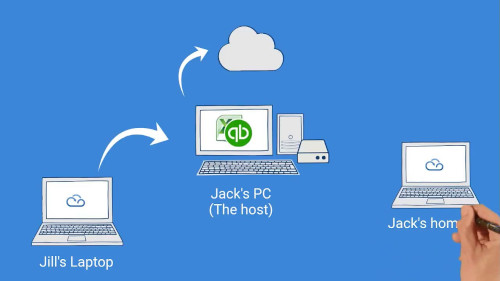Prithwiraj Choudhury, a Harvard Business School associate professor, states, “While prior academic research has studied productivity effects of ‘working from home’ that gives workers temporal flexibility, ‘work from anywhere’ goes a step further and provides both temporal and geographic flexibility.”
He has co-authored the paper (Live and) Work from Anywhere: Geographic Flexibility and Productivity Effects at the United States Patent Office, with Cirrus Foroughi a doctorate student at HBS, and Barbara Larson, a management executive professor at Northeastern University.
Thanks to technology, employees are more accessible and efficient than ever before. However, most companies have been slow to create remote work infrastructures and policies for their employees. The COVID-19 pandemic has forced business leaders to deal with various problems that come with social-distancing. From suspended supply chains to slumping sales, employees’ health, operation continuity, just but a few.
Employees have been navigating towards remote jobs for quite a while now. The flexibility and control over their careers and personal lives playing a major role in the shift. Saving on daily commute expenses, business outfits, and lunch also influence job seekers in decision making.
According to Buffer’s State of Remote Work 2019 report, 99% of the respondents would love to work remotely at some point for the rest of their careers. This is a clear indication that remote work is not a passing trend but here to stay.
The World Economic Forum has workplace flexibility as one of the most significant topics in the future of work. It’s always desirable to create clear remote work infrastructure, policies, and training before a crisis. Otherwise, adequate preparation isn’t feasible during an emergency. When properly planned and executed, remote work has numerous proven benefits to the sustainability of businesses.
Here are some benefits to inspire you to retool your current policies and practices to leverage technology in the workplace.
Reduced business expenses
One of the major fixed costs incurred by businesses is office space and equipment. The variable utility and travel cost only add to the burden. According to Global Workplace Analytics, a company can save up to $11000 per employee annually if they work from home 50% of the time. We aren’t advocating for the complete eradication of physical office spaces, but having a flexible schedule for your employees will reduce the space you need as well as the utility costs. Allowing you to cut on some business expenditures.
Employee retention
According to Flexjobs, 95% of employers have reported that telecommuting has a positive impact on employee retention. Losing valuable employees is a big headache for any business especially SMEs. You can’t compete with the big boys in terms of benefits and salaries so it’s important to leverage remote work.
Some employees cherish an enhanced work-life balance while those with children enjoy the flexibility it provides. According to Mom Corps, 42% of employees don’t mind a pay cut in exchange for flexible telecommute work schedules.
The 2019 State of Remote Work report by Owl Labs shows that remote employees are 13% more likely to stay in their jobs for a long period than on-site employees.
Increased productivity
A study carried out by Canada Life Survey indicates that work from home employees have productivity levels of 7.7/10 compared to office workers with 6.5/10. This is because there are no co-worker distractions and they are free to work during their most productive hours. Also, Stanford Graduate School survey evidenced that remote workers are 13% more productive than their office-going counterparts.
According to HBS Professor Choudhury, productivity increases with the move towards ‘work from anywhere’ policies. Employee’s performance increased by 4.4% when they moved to work from a location of their choice. Researchers estimate that productivity could increase the US economy value by $1.3 billion annually.
Reduced carbon footprint
The entire globe is suffering from the effects of global warming. As a result, everyone including corporates is working towards becoming environmentally friendly. From Ernest & Young to Microsoft, Starbucks all pledging to go carbon neutral and cut on plastics. And sustainability is the buzzword here.
About 50% of the US workforce can work from home. If 79% of them would telecommute, greenhouse gases emission will be slashed by 54 million tons. According to the study on US Patent and Trademark Office, the employees who worked remotely reduced emissions by 44,000 tons as their commute reduced by 84 million miles.
Also, a survey by Nielsen showed that consumer buying decisions are influenced by business sustainability options. Within one year, chocolates that had environmental claims sold 5x faster than those without.
Access to more applicants
Remote work is increasingly becoming a trait that most job seekers look for in employment. A Zapier.com report shows that 74% of employees would quit their jobs for a remote working position. In the past decade, telecommuting in the US has increased by 115%.
Millennial’s and Gen Z have grown up with the art of cheap and effective communication regardless of their location. So the same is expected in their workplaces. Flexibility is one of the factors they look for in an employer. Without it, it would be difficult to capture the attention of highly skilled and young employees.
Additionally, coronavirus is making remote work become the new normal. Freelancers and gig workers are on the rise despite the challenges of getting a steady income and lack of employment benefits. Remote work policies give you access to this talent pool.
Increase in business profitability
Reduced business costs including salaries, travel costs, office space, ultimately lead to increased profits. Employee satisfaction and retention save you from incurring recruitment and training costs. Also, with increased performance and productivity, you are guaranteed of smooth operations and satisfied customers. Happy customers, happy business!
As we have seen, remote work benefits to businesses are equally significant and measurable. To attract and keep the modern US workforce, you need to empower them to work from any location. Besides, you need a business continuity plan that won’t adversely affect you, employees, and customers. Businesses can only achieve these with proper remote desktops and remote access solutions.
Cloud-based technologies have made it easier for companies to enhance their remote work strategies. Based on this data, the remote work revolution is here to stay. Every business should make it a priority to succeed in this decade without sacrificing business performance.





